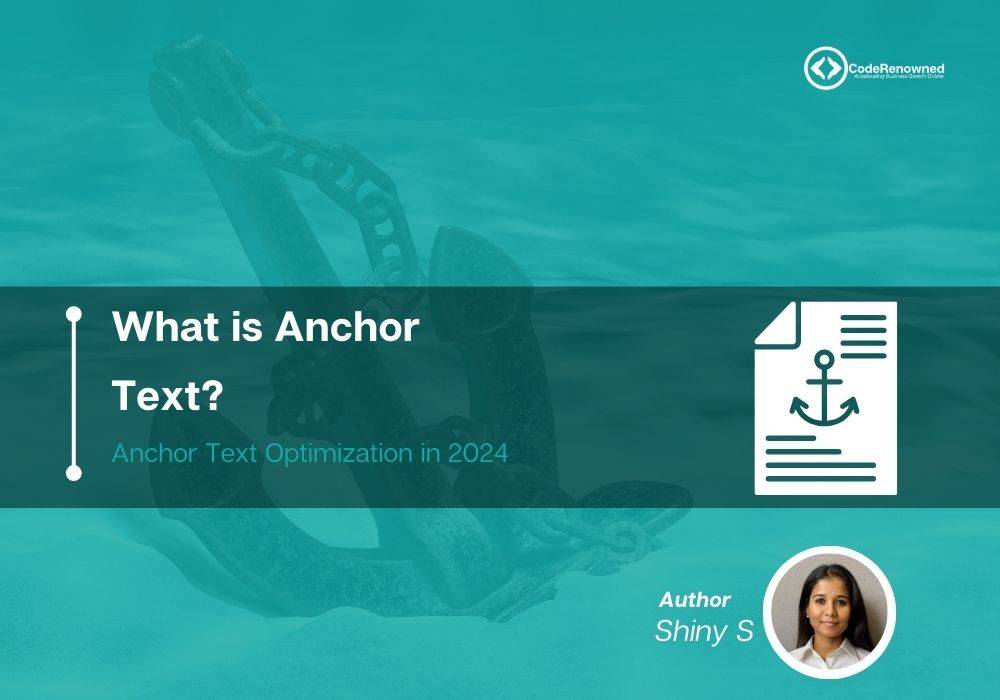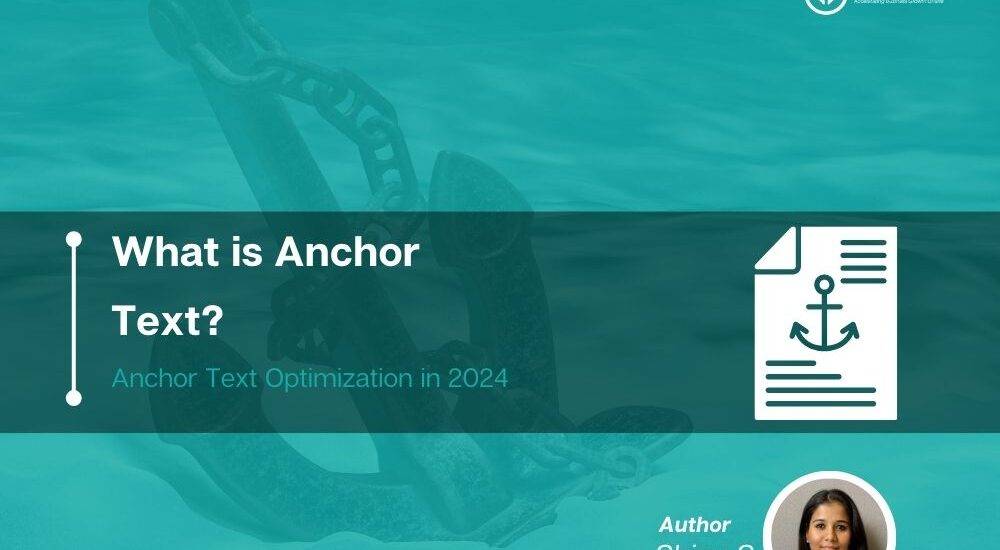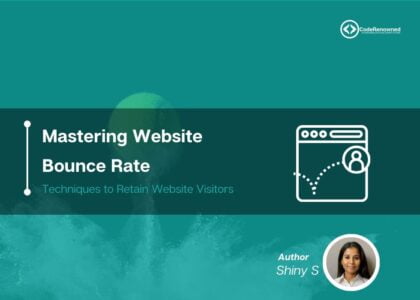What is Anchor Text?
Anchor Text Optimization with User Experience in 2024

Search engine optimization (SEO) has been a constantly evolving landscape. Here, the importance of anchor text optimization has been a long-establishing factor in improving website visibility and ranking.
In 2024, search algorithms continue to prefer user experience, knocking a balance between traditional SEO practices and user-centric optimization. It has become paramount for online success.
What is Anchor Text?
- Anchor text, the clickable text in a hyperlink, plays a role in determining the relevance and context of the linked page to search engines.
- Traditionally, SEO practitioners highlighted keyword-rich anchor text to signal the topic and boost rankings for specific keywords.
- Over-optimization and manipulation of anchor text have led to penalties from search engines, affecting website rankings
In 2024, search engines have become more refined in understanding context and intent, focused on delivering valuable and relevant content to users. Hence, the focus has shifted from keyword-centric optimization to user-centric optimization, providing a seamless and informative browsing experience takes priority over keyword stuffing.
Below are Many types of anchor text commonly used in SEO and hyperlinking practices. These include:
- Exact Match Anchor Text: This type of anchor text uses the same keyword or phrase that the linked page targets. For example, if the linked page is about Makeover, the anchor text would be Makeover too.
- Partial Match Anchor Text: Partial match anchor text has a variation or partial match of the targeted keyword. For example, if the keyword is Makeover, a partial match anchor text could be Face Makeup.
- Branded Anchor Text: Branded anchor text has the name of the brand or company in the content. For example, if the link leads to the Lakme website, the anchor text might be Lakme.
- Generic Anchor Text: Generic anchor text uses general terms like “click here,” “learn more,” or “visit website” as the text to click.
- Naked URL Anchor Text: This anchor text includes the URL of the linked page without any additional text. For example, “https://www.example.com“.
- LSI (Latent Semantic Indexing) Anchor Text: LSI anchor text uses defining, related terms or phrases instead of exact keywords. It helps to diversify anchor text and makes it natural for search engines. For example, if the target keyword is Makeover. LSI anchor text could include phrases like Top Waterproof Makeover or Premium Face Makeup.
- Image Anchor Text: Image anchor text is the alt text connected with the image hyperlinked. Alt text provides a textual description of the image, and when it is linked, it serves as the anchor text.
- Co-citation Anchor Text: Co-citation anchor text occurs when a website is mentioned alongside a link, even if the link to that website is not directly connected. Search engines still use this text to understand the context and relevance of the linked page.
Utilizing these various anchor text types naturally and strategically can improve the SEO performance and user experience.
How can website owners effectively balance anchor text optimization with user experience in 2024?
Natural Language and Definitive Context:
- Obsessing over exact-match keywords in the anchor text, focus on using natural language and definitive context that accurately describes the linked content.
- Include keywords and long-tail phrases to maintain relevancy while catering to user intent.
Diverse Anchor Text Portfolio:
- Diversifying anchor text by branded terms, generic phrases, and partial matches helps create a natural linking profile.
- Avoid repetitive or overly optimized anchor text patterns that can trigger algorithmic penalties and damage user trust.
Relevance and Contextual Linking:
- Prefer relevance and context when implanting anchor text within your SEO content. Ensure that the linked text seamlessly integrates with the surrounding context, offering additional value or information to users rather than interrupting their browsing experience.
User-Centric Design and Navigation:
- Improve user experience by optimizing website design and navigation for intuitive browsing. Clear and descriptive anchor text can guide users through the website, enabling seamless navigation and reducing bounce rates.
Mobile Optimization and Accessibility:
- With the increasing majority of mobile browsing, Prioritize mobile optimization and accessibility in anchor text placement. Use brief and descriptive anchor text that remains visible and clickable on smaller screens, enriching usability for mobile users.
Monitor and Adapt Strategies:
- Continue website monitoring and user behavior metrics for the effectiveness of anchor text optimization strategies. Examine click-through, conversion, and bounce rates to identify areas for improvement and adapt strategies accordingly.
Quality Content and Link Ecosystem:
- Focusing on high-quality and informative content attracts organic backlinks from respected sources.
Cultivate a healthy link ecosystem by engaging in ethical link-building practices and nurturing relationships within relevant communities or industries.
Conclusion:
Anchor text optimization remains a crucial aspect of SEO in 2024. Prioritizing user experience is essential for endurable online success. By optimizing anchor text for search engines and improving user experience, website owners can navigate the evolving SEO and set their websites for long-term visibility and growth.






